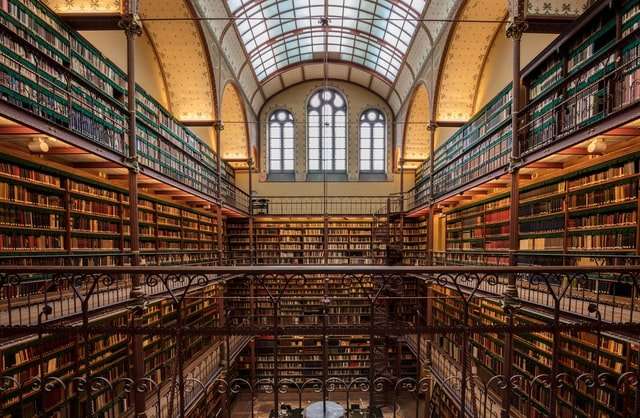Here you can find information about the history of animation production in the United States from 1908 to 2012. The topics are:
1. Biography of the most important animators and studios;
2. Animated films with a brief plot summary;
3. Animation reviews, both on television and at the cinema;
4. The American animation industry and its influence on the world animation scene.
The blog is a work in progress, which means that there is always something new to read.
JACKSON ART is a visual arts blog with a focus on animation. The blog aims to provide information about the history of animated films and its artists, animation studios, and animators from 1908 to 2012. The blog covers everything from Walt Disney’s Snow White and the Seven Dwarfs to independent films such as Anomalisa through historic films like Fritz the Cat to anime films such as Ghost in the Shell.
The blog was started when I found an archive of early animated films on YouTube, which then led me to researching many things about animation including the history of animation. My intention is to share what I have learned with others who are interested in this art form and its history.
The first decade of animation (1908-1918) is commonly referred to as the Golden Age of Animation, or, the Silent Era. It’s a time when many animated shorts were produced by studios that are still in business today. The films were considered “silent” because they had no “sound” track, only a series of title cards, which advanced the plot like a comic strip.
The films were usually shown before an audience at a cinema, and the experience was much like a live-action movie. There was no laughter until the end of the cartoons, when the entire audience would burst out laughing at once.*
The films were not considered mere entertainment; many people believed that they had an important social role to play. During World War I, cartoons were used to teach military personnel about war tactics and weapons. In World War II, animated films were used for propaganda purposes.
This page looks at just some of the many American animated films produced between 1908 and 1918.
The Golden Age of Animation was a period in the history of animation, which began with Disney’s first feature-length animated film, Snow White and the Seven Dwarfs (1937), and ended with the closure of the studios producing animated shorts in American cinemas, following Walt Disney’s death in 1966.
The “Golden Age” is a label that was coined by Jerry Beck and Michael Mallory in 1981; it has since been retroactively applied by other historians to earlier periods in American animation. The beginning of the Golden Age is variously considered to be 1937, when Snow White was released, or 1942, when three studios (Disney, Warner Bros., and MGM) finally surpassed the short output of Fleischer Studios; while its end is generally considered to be 1963, when The Beatles’ film A Hard Day’s Night outsold Woody Woodpecker.
The Golden Age is generally considered to have started with Snow White and ended with Sleeping Beauty , though feature length films were still produced after that point. Still, the seven years between Snow White and Sleeping Beauty saw enormous technical progress within the medium. This period saw the development of limited animation (a technique where only key parts of a character’s body are moved), where more artists were able to work on one film due to
The first commercially successful animated film was “Gertie the Dinosaur” by Winsor McCay. It was created in 1914, and was the first cartoon to have a soundtrack synchronized with the action; McCay broke into song at one point in the film. The short film sold 1 million copies every year between 1915 and 1919.
The next great step forward for animation occurred in 1926, when Walt Disney released his first full-length animated feature, “The Skeleton Dance.” This was followed by “Steamboat Willie,” which featured the first ever depiction of Mickey Mouse. One of Disney’s most famous characters, Mickey Mouse made his debut in the 1928 film, “Plane Crazy.”
“Fantasia” was released by Disney in 1940, and is a unique piece of filmmaking that blends music and animation together to create something entirely new. The film is notable for its experimental animation techniques as well as its pioneering use of stereophonic sound.
Disney’s most famous creation is undoubtedly “Cinderella,” a fairy tale that has been popularized around the world. It is based on a story that originated in China, although it has been adapted countless times since then. In 1950, Disney released an animated version of “Cinderella” that became perhaps the company
“It was just a little idea, at first,” began David Hand, the director of Walt Disney’s first feature-length animated film, Snow White and the Seven Dwarfs. “Snow White was going to be one of a series of fairy-tale story films.”
As we celebrate the 75th anniversary of this landmark film, it’s easy to forget just how risky that little idea was in 1937. It took an enormous amount of cojones for Walt Disney to make a feature-length cartoon. No one had done it before. And no one knew if people would even like it.
I am a professional artist and animator, and I have been working in the field for over 25 years. Most of my work is animation production art. My resume is listed here.
Throughout my career I have worked on both the creative and business side of the industry. I have written, drawn, and directed cartoons, commercials, and promotional films. I have also worked in all phases of animation production, from pre-production to post-production. In addition to drawing and painting I am skilled with computers, photography, video editing and digital image manipulation. My skills include writing/storyboarding, illustration/animation, character design/modeling/sculpting, photo manipulation/retouching, graphic design, layout/camera work and 3D modeling/animation.
Most of my work is 2D traditional animation or CGI with a strong emphasis on character design. For example you can see some of my recent work at http://www.dinkydoodle.com where I do freelance character design for a greeting card company.
**I am particularly interested in traditionally animated feature films and television series that are made using the old fashioned techniques of hand-drawn cels on cels (or cels on paper). This type of traditional animation is all but


